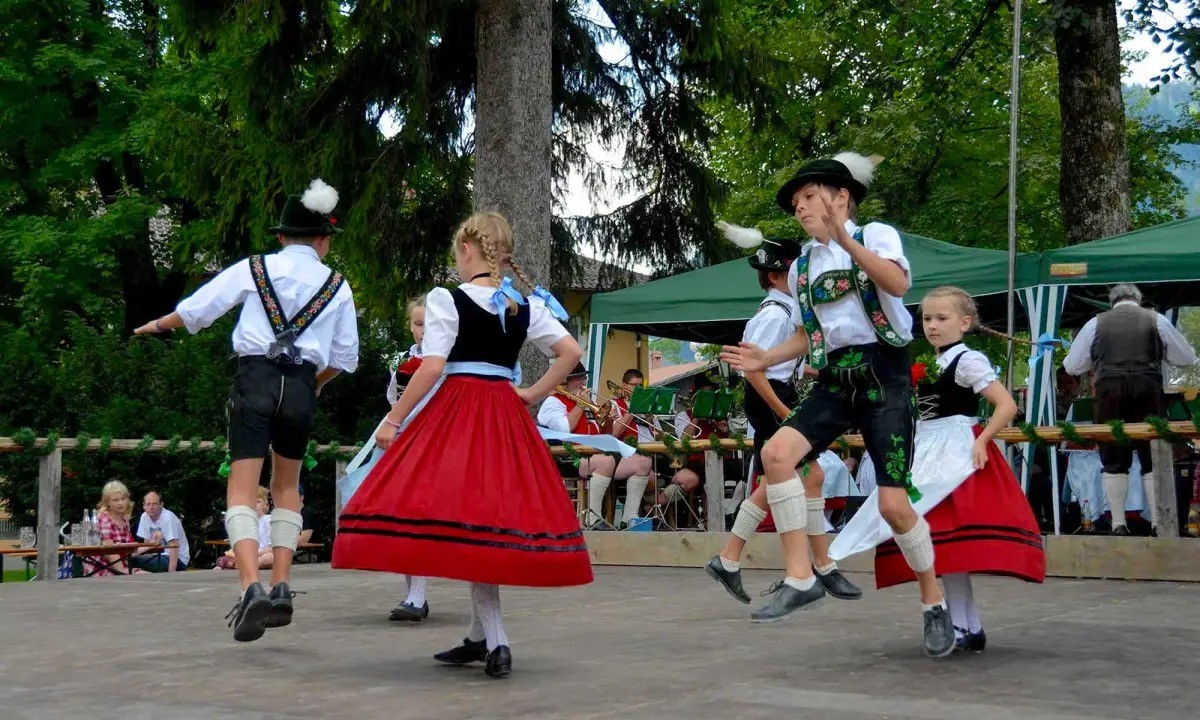Hidden Gems Of Traditional German Folk Dances You’ve Never Heard Of

Have you ever wondered about the hidden gems of traditional German folk dances? Many people know about the famous Bavarian Schuhplattler or the Maypole dance, but Germany has a rich tapestry of lesser-known dances that are just as captivating. These dances often tell stories of local history, celebrate seasonal changes, or mark important life events. From the lively Zwiefacher to the intricate steps of the Ländler, each dance offers a unique glimpse into German culture. Whether you’re a dance enthusiast or just curious, exploring these traditional dances can be a fun way to connect with Germany's vibrant heritage.
Discovering Germany's Traditional Folk Dances
Germany boasts a rich tapestry of traditional folk dances, each with unique steps, costumes, and music. These dances offer a glimpse into the country's cultural heritage, often tied to specific regions. Let's uncover some lesser-known gems that you might not have heard of.
1. Zwiefacher
Originating from Bavaria, the Zwiefacher is a lively dance that combines waltz and polka rhythms. Dancers must be quick on their feet, switching between the two styles seamlessly.
- Region: Bavaria
- Music: Accordion and brass instruments
- Costume: Dirndl for women, Lederhosen for men
2. Schuhplattler
The Schuhplattler is a traditional Bavarian dance where performers slap their shoes, thighs, and knees in rhythmic patterns. It’s often performed by men, showcasing strength and agility.
- Region: Bavaria
- Music: Accordion and zither
- Costume: Lederhosen and hats with feathers
3. Ländler
The Ländler is a folk dance from the Alpine regions of Germany, Austria, and Switzerland. It’s a slow, graceful dance often performed in pairs, featuring intricate footwork and spinning.
- Region: Alpine regions
- Music: Accordion and fiddle
- Costume: Traditional Alpine attire
4. Rheinländer
The Rheinländer is a lively dance from the Rhineland region. It’s characterized by its fast tempo and joyful movements, often performed during festivals and celebrations.
- Region: Rhineland
- Music: Brass bands and accordions
- Costume: Colorful traditional dresses and suits
5. Dreegspack
From the northern region of Schleswig-Holstein, the Dreegspack is a unique dance involving three dancers. It’s known for its playful and humorous nature, often performed at local fairs.
- Region: Schleswig-Holstein
- Music: Fiddle and accordion
- Costume: Traditional northern German attire
6. Holsteiner Dreitour
The Holsteiner Dreitour is another dance from Schleswig-Holstein, featuring three distinct parts. It’s a communal dance, encouraging participation from everyone present.
- Region: Schleswig-Holstein
- Music: Accordion and flute
- Costume: Simple traditional clothing
7. Zwiefache
A variation of the Zwiefacher, the Zwiefache from Franconia is slightly different in rhythm and style. It’s a testament to the regional diversity within Germany’s folk dance traditions.
- Region: Franconia
- Music: Accordion and clarinet
- Costume: Franconian traditional attire
8. Steirischer
The Steirischer is a dance from the Styrian region, blending elements of both Austrian and German folk traditions. It’s known for its energetic steps and lively music.
- Region: Styria
- Music: Accordion and guitar
- Costume: Styrian traditional clothing
9. Polka
While the Polka is widely known, its German variant has unique characteristics. Originating from Bohemia, it’s a fast-paced dance that has become a staple in German folk culture.
- Region: Various regions
- Music: Brass bands and accordions
- Costume: Varies by region
10. Hessischer Landler
The Hessischer Landler is a traditional dance from Hesse, featuring slow, deliberate movements. It’s often performed at weddings and other significant celebrations.
- Region: Hesse
- Music: Accordion and violin
- Costume: Hessian traditional attire
Embracing the Richness of German Folk Dances
Traditional German folk dances offer a vibrant glimpse into the country's cultural heritage. From the lively Schuhplattler to the elegant Ländler, each dance tells a unique story. These dances aren't just about steps and music; they reflect the history, values, and traditions of the regions they come from. Experiencing these dances, whether by watching or participating, provides a deeper connection to German culture. Next time you find yourself in Germany, seek out a local festival or dance event. You'll not only enjoy the rhythm and energy but also gain a richer understanding of the people and their traditions. So, lace up your dancing shoes and get ready to be part of something truly special. German folk dances are more than just performances; they are living traditions that continue to bring joy and unity to communities.

